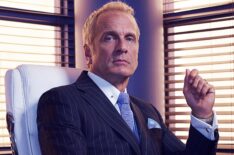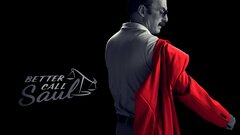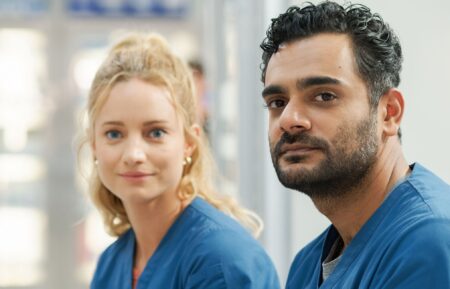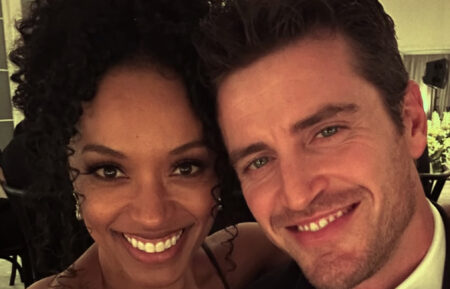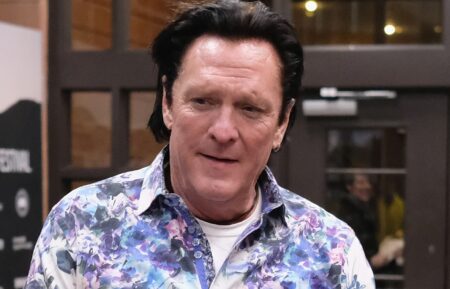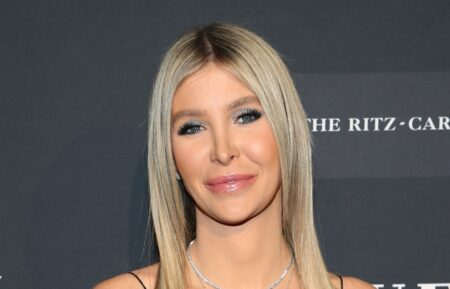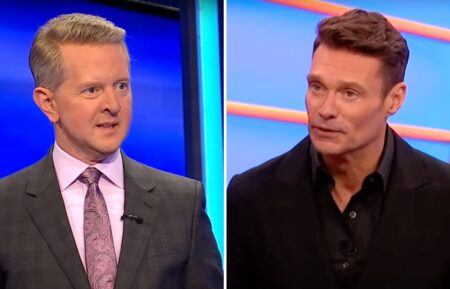‘Better Call Saul’: Giancarlo Esposito on Stepping Behind the Camera in Season 6
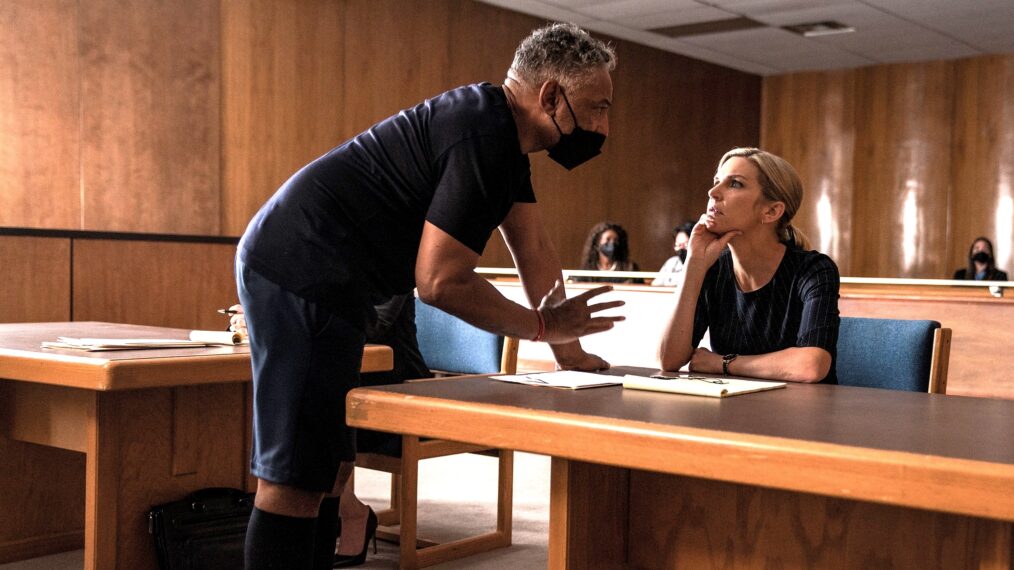
Spoiler Alert
[Warning: The below contains MAJOR spoilers for Season 6, Episode 6 of Better Call Saul, “Axe and Grind.”]
Better Call Saul‘s latest installment, “Axe and Grind” sets up quite a few cliffhangers as it tees up the final chapter’s midseason finale.
And helping bring the stories to the screen is star Giancarlo Esposito who stepped back from the spotlight to serve behind the cameras as this episode’s director. Below, he’s opening up about the process behind crafting an episode for the series, why this is his first time directing for the franchise, and getting to delve deeper into Kim (Rhea Seehorn) and Lalo’s (Tony Dalton) characters.
This is your first time directing anything for Breaking Bad or for Better Call Saul. What sparked your interest and got you involved in that way?
Giancarlo Esposito: I want to learn. [That] is what really got me going back 10 years ago on Breaking Bad. When I gave my second feature film to Vince Gilligan and Mark Gordon, that was with the intention that they would consider me and notice me and see me in that way. It’s taken many years to have them invite me, and I was completely shocked and amazed and taken aback when they did. I thought to myself, “Good things come to those who wait. Have I been paying enough attention? Did I pay enough attention all this time?” Because I really feel like these are master storytellers on paper, but they’re also master executors when it comes to actually getting it done. And so the impetus for me was to learn.
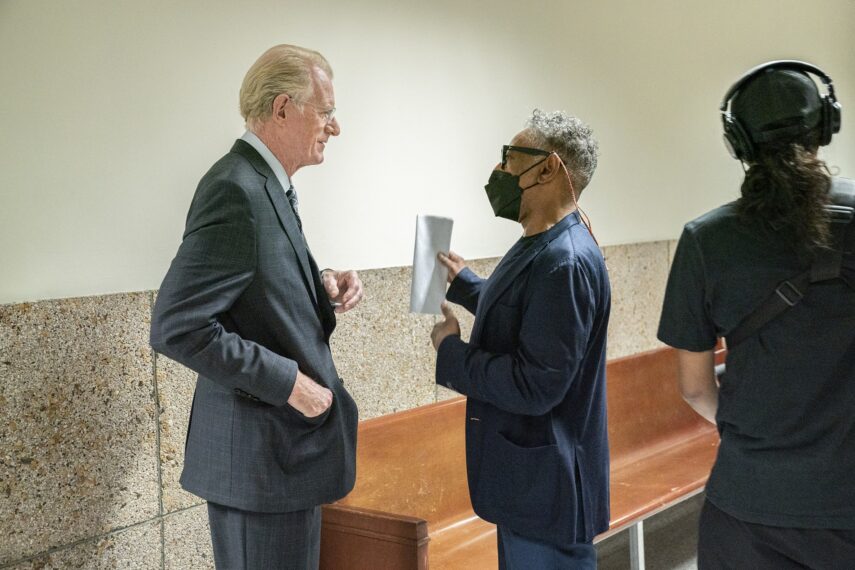
(Credit: Greg Lewis/AMC/Sony Pictures Television)
I’ve been a theater actor and done a lot of film and television as well, but I’m really good with actors. I’ve taught acting. So I always look to inspire the actors within a scene and it gets easier and more defined when you have such great scripts to work with. I was really nervous because I haven’t seen every episode of Breaking Bad or every episode of Saul. I didn’t go back and look at what I hadn’t seen [though]. Because I said, “You could do what other directors did, or you could do what you do.”
I’ve always been that way. When I’m working on a movie or a television show or whatever it is, I don’t go to the movies, I don’t watch any other shows. I don’t binge television when I’m working on television because I don’t want to see anything that might affect my vision or my dream or how I might act. So the one thing I did do, though, I went back and I broke my golden rule by looking at Werner’s death.
That’s a great spot to revisit since it did happen a few seasons ago. It’s a very important story beat right now with Lalo too.
Yeah. I had to work with Jonathan [Banks] in a very soft and gentle scene, and another scene where he’s a little bit more threatening and gets challenged by Tyrus. I went back [to Werner’s death] and it reminded me. I watched the scene. I felt like there was a lot of conversation going on, but it still held our interest. I wound up drifting into it as an actor thinking, “Would I have made that choice? ” And then they take a walk and there are no more words. Then the story really gets told.
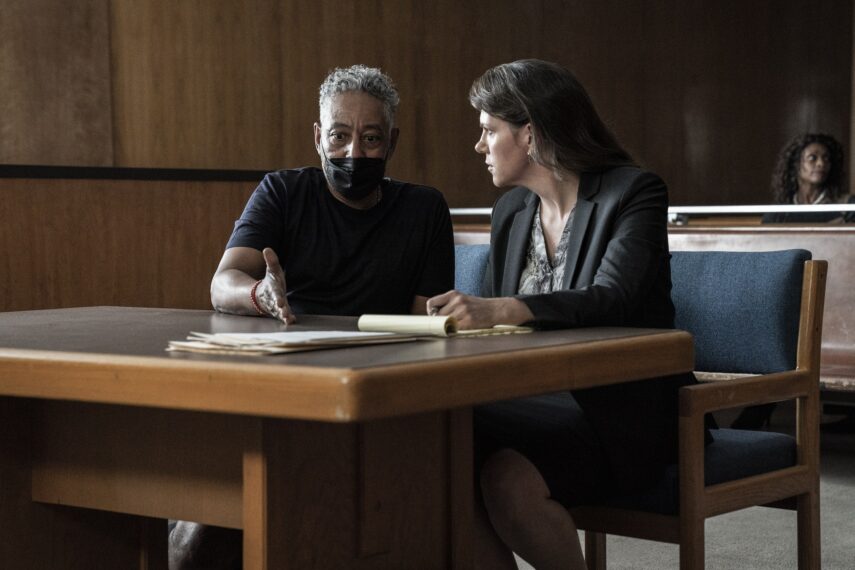
(Credit: Greg Lewis/AMC/Sony Pictures Television)
Those details are so important and that’s part of what makes this episode memorable. Whether it’s Kim’s earrings, Lalo’s razor behind the business card, or Howard’s peace sign coffee beverage, there’s a lot told with imagery and detail. Was that all scripted or did you collaborate with Vince and Peter on that?
Those moments, I wish I could take credit for. They were scripted, but they weren’t dictated as to how I shot it. So it was tricky with the card. Peter Gould [and I had] a lot of conversations, Zoom calls, to figure out how to do that, not only safely, but how to do it in a way that it looked real. I like to do my hands like that, and so I had a great idea about how to hold the card behind it.
The angle that I wanted for that was to be down almost over Lalo’s view of the card and to have Casper’s face in the same frame so he could get closer and closer. But I didn’t want Lalo to get closer. It was how to use the camera to aid me in having you understand what just happened and to have it be believable.
And then with the peace sign, that scene was very delicate. For Howard and his wife, I wanted that to be a devastating scene that really made your heart just break. And Patrick Fabian is such a wonderful actor. He had all this coffee business he has to do, making the cappuccino, putting the peace sign in, really it’s about his demeanor, his hope. And so there’s so many elements of this particular episode that rang true with my life. I lived in Connecticut, I got divorced. I lived at my own guest house while all that was happening. My kids and my wife went away. It all turned out great. We’re all really close and all that, but-
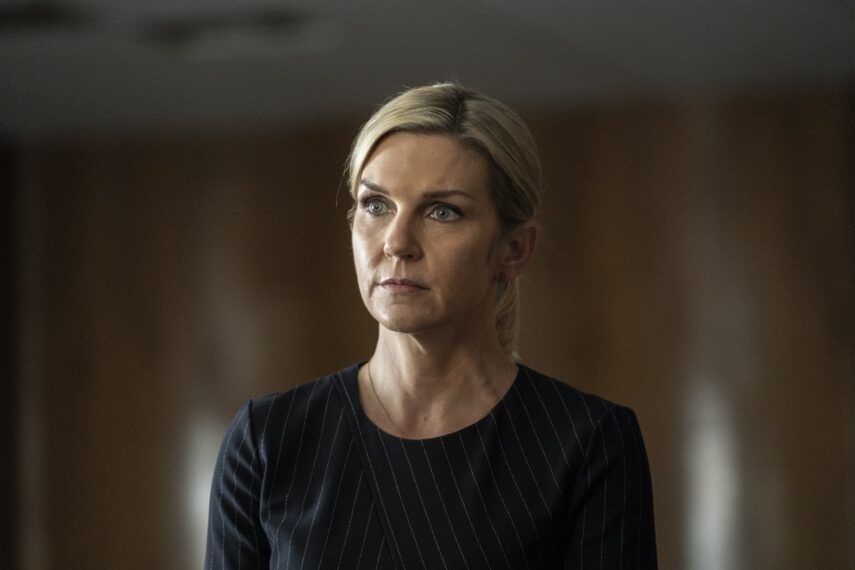
(Credit: Greg Lewis/AMC/Sony Pictures Television)
It’s a hard time.
Yeah. And I wanted that to be reflected in his body. So in a way, he’s acting. He wants her back so badly, but he has to be cool. He can’t be overwhelming, you know? And then of course she takes it, just pours it into the other cup, and walks out. She notices [the design], but it doesn’t mean anything to her. To be able to stretch the moment out is for me the inspiration from what was written.
This episode tackled some uncovered ground in terms of Kim’s childhood and what’s going on with Lalo in Germany. Was that part of the excitement in getting to helm this episode as a director?
Absolutely. For me, when they said, “We’re going to Germany,” I was like, “Yeah, let’s go to Germany.” I’ve been to Germany, been to Bavaria, been to Austria, been to those rolling hills, had references, and looked up photos to see how lush that looked. The challenge was it’s not that lush here [in New Mexico], but it was a particular draw for me to be in two worlds. The draw for me with Germany was to be in a world where Lalo Salamanca was obviously out of his element.
An outsider.
An outsider. And so how do you create that crazy Lalo of a guy who just doesn’t care and will do anything? And how do you believe that he could get the upper hand on this man who seems so formidably large, but also within that barn? I wanted to create fear. The guy is standing there with an ax in his hand. Lalo doesn’t even have his gun out yet. But he’s already afraid. And that’s when I got it. He already knows that this could happen. It’s been bothering him for a long time.” So there you have it, fear, the anchor of emotion that we needed.
But to live in that world and live in Kim’s childhood world was particularly important to me because that moment defines the rest of Kim’s life. When you meet her later, she’s wearing the same earrings. When you see her in the veterinarian’s office, she’s wearing those same earrings. That became a part of her life that was so very special. What happened? It got twisted for her. She needed a parent to reprimand her and tell her, “you can’t do this.” That was her way of acting out to get the right attention. And instead, she gets the opposite.
And so that sets up our episode with a bookend to the end, where she again makes the tragic choice she makes, when everything in her life that she wanted, it’s all in front of her, it’s all finally coming true. And she trades it. She trades it to make a choice that excites her more and makes her feel more responsible in her mind because she doesn’t let Jimmy down. Whatever that choice is, it’s reflective of the choice that was made at the very beginning of that relationship with her mom, where she attempted to steal those earrings. And then it was given in to her as a gift, an analogy of part of her whole life.
Better Call Saul, Season 6, Mondays, 9/8c, AMC and AMC+

